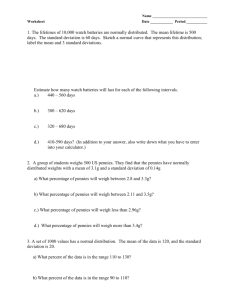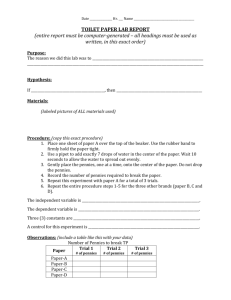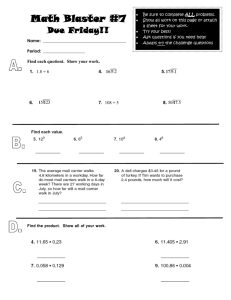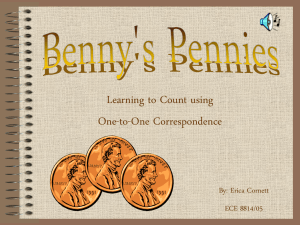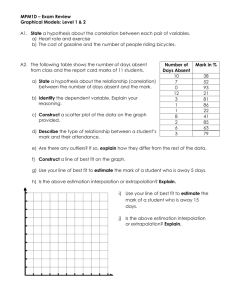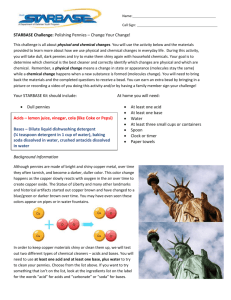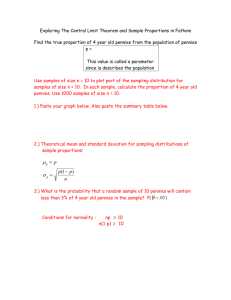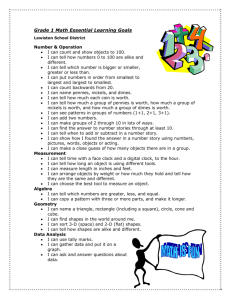Penny Lab: Physical & Chemical Properties Worksheet
advertisement
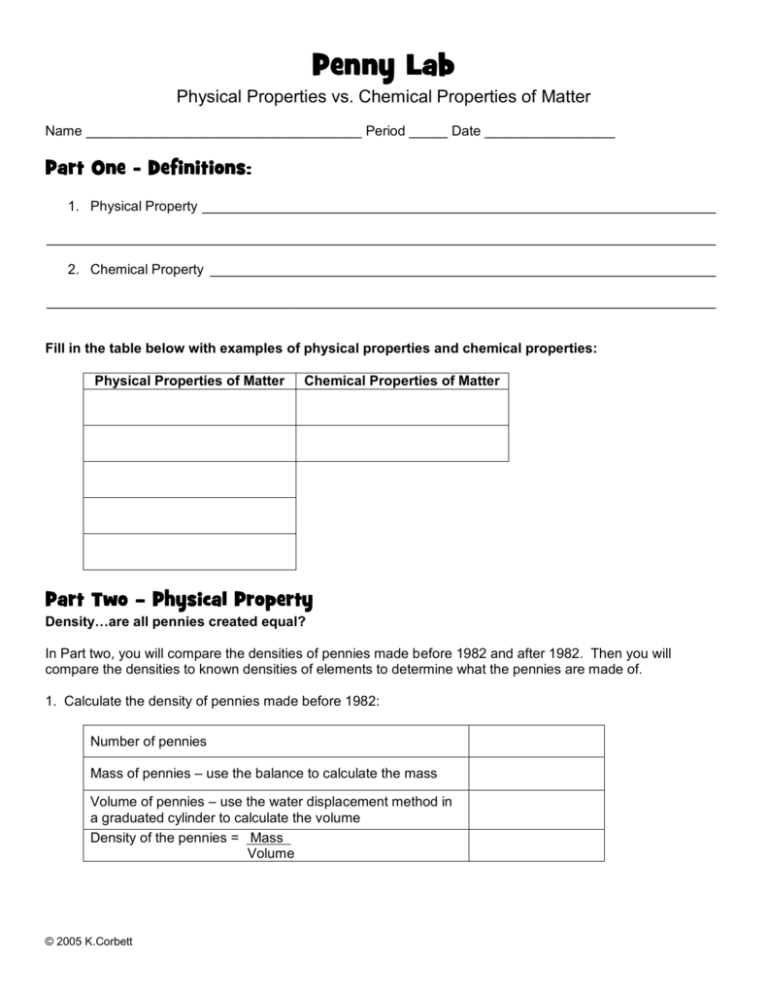
Penny Lab Physical Properties vs. Chemical Properties of Matter Name ____________________________________ Period _____ Date _________________ Part One - Definitions: 1. Physical Property __________________________________________________________________ ______________________________________________________________________________________ 2. Chemical Property _________________________________________________________________ ______________________________________________________________________________________ Fill in the table below with examples of physical properties and chemical properties: Physical Properties of Matter Chemical Properties of Matter Part Two – Physical Property Density…are all pennies created equal? In Part two, you will compare the densities of pennies made before 1982 and after 1982. Then you will compare the densities to known densities of elements to determine what the pennies are made of. 1. Calculate the density of pennies made before 1982: Number of pennies Mass of pennies – use the balance to calculate the mass Volume of pennies – use the water displacement method in a graduated cylinder to calculate the volume Density of the pennies = Mass Volume © 2005 K.Corbett 2. Calculate the density of pennies made after 1982: Number of pennies Mass of pennies – use the balance to calculate the mass Volume of pennies – use the water displacement method in a graduated cylinder to calculate the volume Density of the pennies = Mass Volume Conclusions: 1. Are the pennies made of the same substance? How can you tell? 2. Compare the densities of the pennies to the known densities of several elements. What do you think the pennies before 1982 are made of? What do you think the pennies after 1982 are made of? Justify your answer. Density (in g/cm 3) of: Aluminum = 2.7 Zinc = 7.1 Gold = 19.3 Copper = 8.9 Platinum = 21.5 Nickel = 8.9 Iron = 7.9 Composition of pre-1982 pennies: Composition of post-1982 pennies: Justify your answers: Part Three – Chemical Property Reactivity…what do pennies react with? 1. Obtain a beaker and 1/2 of a paper towel. 2. Write your names on a piece of masking tape and adhere to the beaker. 3. Fold the paper towel and place it in the bottom of the beaker. 4. Obtain a small amount of vinegar. 5. Pour just enough vinegar on the paper towel to make it thoroughly damp, but not puddled. 6. Place a penny on the paper towel. 7. Place your beaker in the tub at the front of the room. Next Day: 1. Write several observations about your penny. ____________________________________________ ______________________________________________________________________________________ 2. Explain how this is an example of the penny’s chemical property of reactivity with air and vinegar. ______________________________________________________________________________________ ______________________________________________________________________________________ © 2005 K.Corbett

